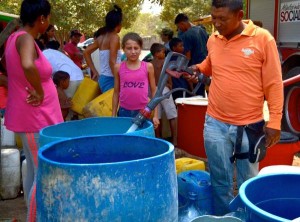By Bill Rovira
Rio Grande Guardian
REYNOSA, Mexico – Reynosa is a city of contrasts. Political and business leaders point to more projects, more jobs and increased opportunities for all.
A state-of-the-art soccer stadium is soon to be finished and will bring a professional team to the city. Road construction, infrastructure improvements and the opening of new maquiladoras are creating new jobs by the thousands.
At the same time, Reynosa is also the home to a large transient population of migrants, either recently deported from the United States or hoping to make their way to the same.
A taxi driver nervously navigates the streets of downtown Reynosa on this Tuesday morning, passing the bullring (Plaza de Toros) which only the day before had been the scene of a gunfight between federal police and members of organized crime.
The Feds reported five “bad guys” killed, not reporting any casualties in their own ranks. The taxi driver claims they lost four of their own. The driver would rather not be in this part of town, not now because he says that it is closely watched by both law enforcement and the criminal element.
“When you see as much going on as a taxi driver does, and they know that you know, your life is not easy,” he says. “Many drivers just disappear. They are never heard from again.”
With those words of explanation, the driver, who is being paid by the hour to take us to several destinations, insists on dropping us off and picking us up at each locale because it is not prudent for him to wait for clients because it would create suspicion. He is not comfortable with transporting a contingent of reporters to one of the major battlegrounds of the city.
The Casa del Migrante and the Senda de Vida shelters are located in the same area of Reynosa; adjacent to an assortment of city-operated homes for the elderly, an infant rehab clinic, the city archives, the shackled bullring and the infamous “red light” district of the Mexican border town of some one million-plus inhabitants.
Both shelters serve a similar clientele, migrants en-route to a dangerous and risky crossing of the Rio Grande in search of “the American Dream,” or those who have been deported in a frustrated attempt. Both have populations of Northbound Central Americans who have yet to cross and still have the illusion of a better life north of the river, and southbound Mexicans who were caught by the Border Patrol, repatriated to Mexico and now either recovering from the physical and/or psychological consequences of their misadventure and just waiting for the inevitable, depressing trip back to their homelands.
The reasons for embarking on the long and dangerous journey vary with each individual.
Juan, a young man from Honduras rests uncomfortably on the bottom bunk in the men’s dormitory at Senda de Vida, a sprawling shelter for migrants and the indigent located on the banks of the Rio Grande a few miles from the downtown Central Plaza and Reynosa City Hall. He is recovering from a severe beating at the hands of a street gang who assaulted him after work, presumably to relieve him of his earnings.
Bystanders called Civil Protection, the Mexican equivalent of EMS in the U.S., who after providing him with medical attention took him to the Senda shelter to recover in a safer environment. He is bruised and battered from head to toes and in too much pain to get up for lunch. He will remain in the shelter until he has recovered. After that he plans to continue his journey to the US.
“I am hard-working and trust and believe in God,” he says sadly. “I thought since I had found work in Reynosa that I might stay here. Not after this. I could have been killed.”
Two young women from Guanajuato state tearfully arrive at the Casa del Migrante shelter. They have just been deported from Hidalgo, Texas after crossing the River at 2:00 a.m.
“We spent all of our money getting here and crossing the river,” sobs the older of the two. “That’s it. We’re going to have to go back to our lot in Guanajuato.” Migrants typically pay from $800 to $1,000 dollars to smugglers that lead them from Reynosa to the Texas side of the border.
“They left us on a road somewhere in Hidalgo where the Border Patrol caught us. They just dropped us off like stray dogs,” adds the younger of the pair.
Octavio, a melancholy but likeable muscular man from El Salvador is under treatment at the shelter for a nervous disorder.
“I really don’t know what I’m going to do from here forward,” he declares. “My nervous condition is serious, my depression is unbearable. I really should not have left my homeland but my mother was killed under the most horrible conditions and I was living in the streets besides a railroad track.”
He had planned to go to Houston but is now uncertain because he doesn’t feel he has anything to go back to in his home country. Octavio says his nervous disorder and depression from the death of his mother has been complicated by the horrors of what he has observed during his travels through Mexico.
“It has been unbelievable and horrible what happens to women that choose to make the journey through Mexico. They are not only extorted but also violated. It is almost inevitable for attractive migrant women. Many are killed even after all of that,” Octavio said.
Ana, a young woman in her late teens points to her village in the State of Puebla. “I hate to think that I have to go back to so much poverty but what else is there now?” the young lady asks rhetorically. Like the two young ladies from Guanajuato, Ana was caught by the Border Patrol, in her case near a safe house in McAllen. She lasted two weeks in the U.S. before her detention and deportation.
Migrants at both shelters enjoy a safe place to sleep, wholesome food, clean clothing, and any necessary medical attention. At the Casa del Migrante their stay is limited to three days unless they have extenuating circumstances requiring them to stay longer.
Senda de Vida, a shelter which also accepts indigents and the homeless regardless of migratory status doesn’t put a limit on the time inhabitants may stay but out of necessity all know their time at the shelter is temporary.
Sister Mary Rosalia sets ground rules for the group of three reporters visiting the Casa del Migrante today: only talk to those who want to talk, only photograph those who want to be photographed. She patiently answers questions about the mission and financial base of the shelter and proudly points to an area of new construction in the complex, offices where migrants can be interviewed and make calls home in privacy, and more showers.
At the Senda de Vida no one lays out the rules. The staff just opens the doors to us and allows us to roam about, speaking with and photographing the clients at our discretion. This is a much larger facility than the Casa del Migrante, serving more clients and a broader cross section of the needy.
Theoretically, anyone who asks for admission to the shelter is granted a bed, clothes, food and a place to sleep, plus the shower and bathroom facilities and medical attention as needed. There is even a dormitory for the elderly.
There are no restrictions on migratory status, no interview process, just a safe place to stay for anyone in need, according to the staff.
What the two shelters share in common is that they showcase the heartrending reality of those who are left out of progress and prosperity…
Finish reading Broken Dreams – A Look at Two Immigrant Shelters in Reynosa





